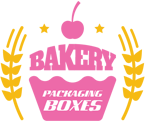The whole world is affected by global warming and pollution. Customers searching for eco-friendlier brands to buy from shops, and businesses are searching for novel ideas to minimize their carbon footprint. Along with options regarding shopping, the non-degradable goods packaging of various brands has negative effects on nature. That’s the reason it is significant for your brand to not be one of them. The Bakery Packaging Boxes provides you with various options for Custom Eco-friendly packaging boxes options, where sustainability meets creativity.
Following are the 7 powerful choices for customized eco-friendly boxes.
Biodegradable Packaging Peanuts:
New York has currently restored a ban on Styrofoam, airy material, and the light utilized for takeaway cartons and loose-fill packaging, termed Expanded Polystyrene Foam (EPS).
And the same US cities have adhered to suit. EPS is not biodegradable and economically recyclable, often searching its way into the waterways where it can cause serious effects on marine life.
Styrofoam is a standard loose Custom Eco-friendly boxes packaging fill for delicate or sensitive products, adhering against shocks and aiding to save the product movement.
For searching the business for the closest replacement to this classic packaging, air biodegradable air peanuts are now present. This work is similar to those of the Styrofoam brethren, but they do not stay for a long time polluting the surroundings. They are less expensive in price.
Bubble Corrugated Wrap:
Everyone is confidential with bubble wrap packaging – a famous children’s favorite. This packaging aids in saving delicate products during shipping.
Although, this is not an eco-friendly material that is based on plastic. The best news is many sustainable replacements are now developed as replacers or you can name them as substitutes.
One of them is a wrap prepared from recycled corrugated cardboard. Besides that, in cardboard recycling post-consumer waste, the elements are provided an extra life as an adhering agent.
Tiny cuts are caused to generate a groan box-type effect that saves against shocks just as bubble wrap does. The drawback is that you do not get the contentment of bursting the bubbles after that!
Air Pillows Prepared from Recycled Content:
Expanded air pillows are one more cost-saving and eco-friendly replacement to bubble wrap or Styrofoam. Present in plenty of sizes, they are best for empty space in boxes or giving adhering around packed products.
Air pillows are tiny bags that can be blown up – however, they contain mainly the air. This deducts the amount of plastic utilized in their transport and production as compared to other adhering elements.
Air pillows can be recycled, reused, and are even decomposable. It is significant you get air pillows prepared from 100% recycled materials, with decomposability emphasized.
Recycled Paper and Cardboard:
No doubt, every filler material is required to be housed in anything, and cardboard Eco-friendly boxes are the standard of the industry. Related to other materials – especially plastic – 1 cardboard box minimizes carbon dioxide and oil emissions by 60%.
In addition, as an organic material, cardboard is 100% decomposable and can be reused 5 to 7 times. Still, this does not mean cardboard is a model continual material pure of environmental sins.
Decomposition is a procedure that releases methane gas into the surroundings. Therefore, when the cardboard is disposed of at landfill sites, the breakdown of the material is breakdown derived from a high carbon footprint.
In addition, the sourcing of new fiber demands tree pulp, which constitutes an important risk of deforestation.
To make sure the packaging is eco-friendly, try to source consumers or post-industrial recycled cardboard and paper. Moreover, seek materials highlighted as FSC-certified to make sure you are sustainably managed forests.
Cornstarch Packaging:
Cornstarch is an organic material that has built inroads into the environmentally friendly packaging industry.
Acquired from maize or corn plants, corn starch possesses plastic-like characteristics preparing this material as the best plastic replacement in various contexts – from molded forms to bottles and loose film packaging.
While a more sustainable replacement for petroleum-based packaging, cornstarch is not without its difficulties. As this type of material is acquired from the corn grains, it takes part in the animal food supply and human systems, possibly increasing the corn price which is one of our staple diets.
Therefore, it is best to weigh up the advantages and disadvantages before utilizing cornstarch plastic. There are more effective replacements as mentioned below:
- Seaweed
- Mushroom
- Microbial Polyester Packaging
Mushroom Packaging:
Cornstarch mushroom over for this replacement, eco-friendly packaging solution. Yes, trust it or not, the packaging is prepared by mushrooms.
Mushroom packaging is produced by utilizing a process that sterilizes and grounds the waste of agriculture, which is then merged together by a matrix of roots of mushroom, termed mycelium.
This raw material can be turned into the wanted shape. It is then dried and utilized as packaging. agricultural waste resembles that waste and that’s why could not be utilized as a food source for animals or humans.
Therefore, this material keeps away the controversies that are linked to the packaging of cornstarch. In addition, there is not only a free petroleum material but it is naturally degraded at an awesome rate.
The packaging of mushrooms can be enriched at home, decomposing into organic matter and non-toxic. Still, at the spot, this is only a solution of packaging for mini products.
Seaweed Packaging:
From mushroom to corn, and then to seaweed. Seaweed is a packaging of green solution that is prepared by utilizing the gelatinous substance agar in most algae and seaweeds.
The designers have developed a process that takes out agar from algae and seaweed. The agar is then dehydrated to generate a material that can be utilized as packaging.
The resulting condition depends on the method of dehydration utilized. To make a soft adhering agent, the material is frozen to generate a stiff, film-like state that is then squeezed. Being prepared from a sustainable and plentiful raw material, the packaging could be the next big thing in eco-friendly, packaging decomposable replacements.

